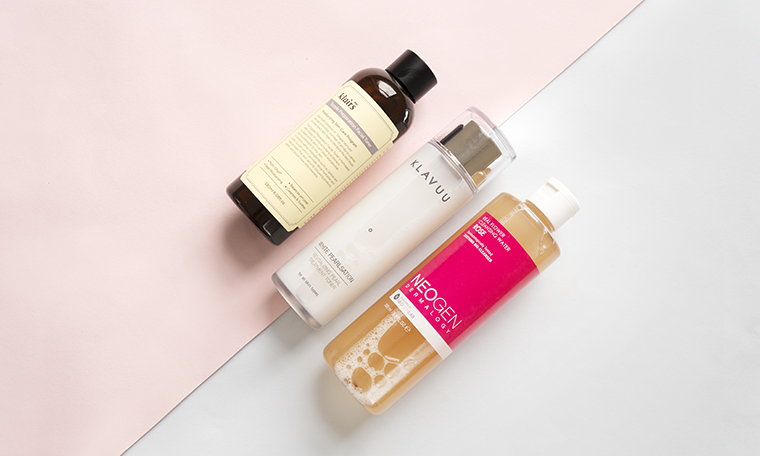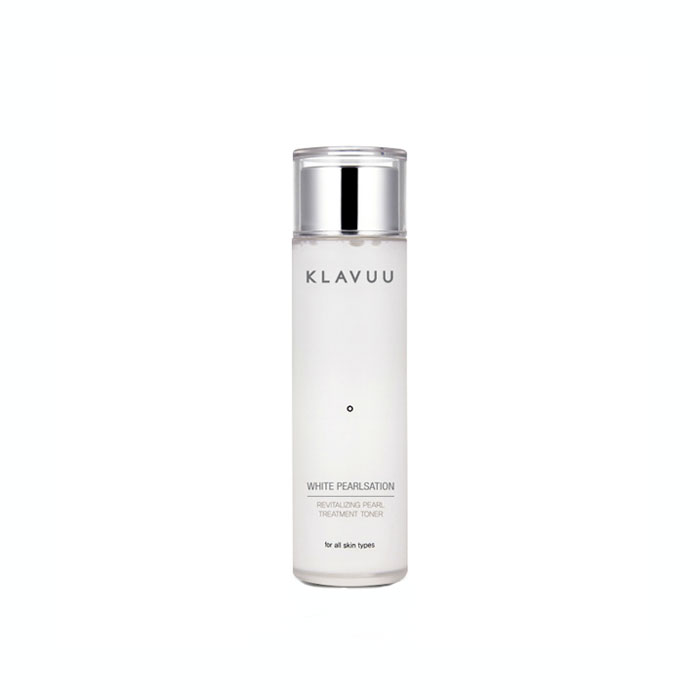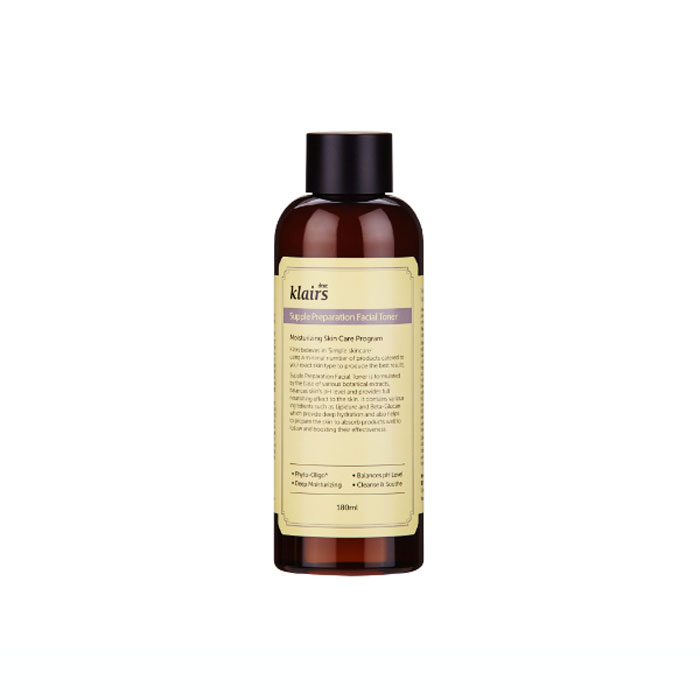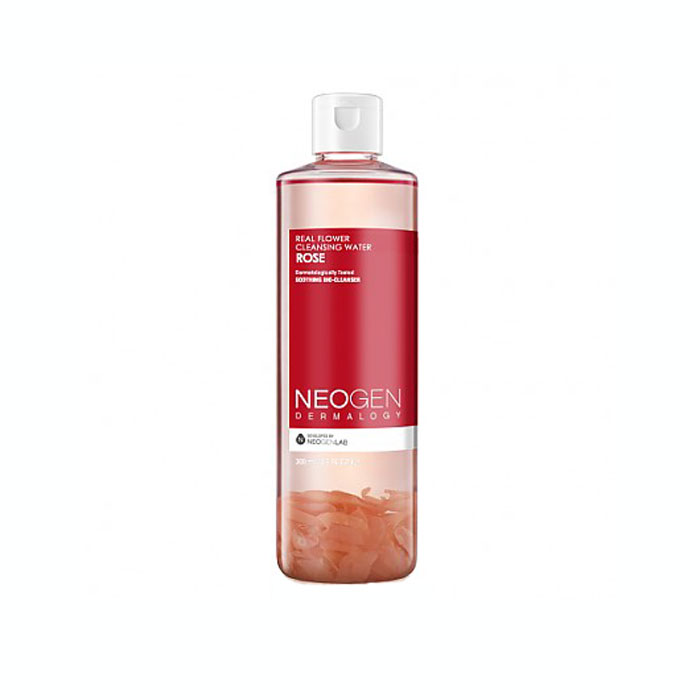Do you truly know the difference between toner and cleansing water? We break it down here.
In the past we’ve taken you through the difference between essences and toners and the difference between cleansing water and micellar water, but that’s just the tip of the iceberg. With all of those clear liquids in your cabinet, you can sometimes wonder what in the world they are actually doing for your skin. Here we break it down what is up with all these “cleansing waters” and why they aren’t the same thing as toner.
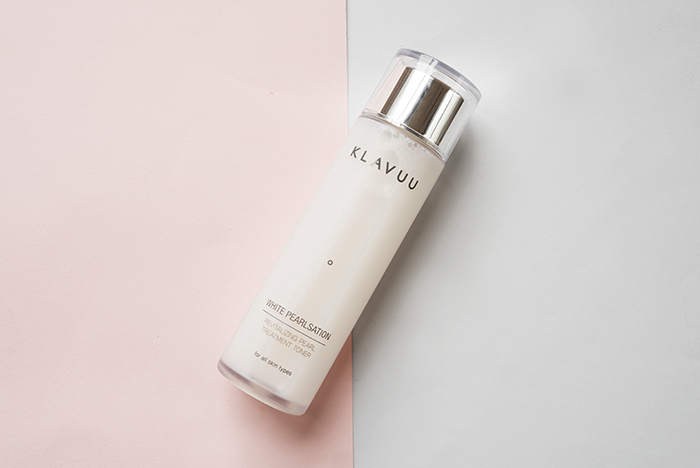
It’s all clear, it’s all liquid, and it all takes off your makeup, and you even have some products that are both, like the Son and Park Beauty Water. Trés confusing, I know. So when you get down to it, what actually makes toner any different from cleansing water? Let me break it down for you.
What is toner?
To many, toner is that refreshing, tingly stuff you put on after you cleanse. But a lot of people don’t know what it actually does, hence thinking it’s the same as essence or as cleansing water. Toner is actually really different and a very important step in both morning and nighttime routines.
In skin care, toner is a lotion (as the French say) or wash meant to cleanse your skin and pick up everything your double cleanse did not. Toner removes any dead skin cells left after exfoliating and gives your skin a great big boost of hydration. There are so many different toners out there: pH balancing, cleansing, etc. It all just depends on what your particular skin concerns are and what other products you are using.
The Klavuu White Pearlsation Revitalizing Pearl Treatment toner uses pearl extract, mineral water, apple fruit water, and kelp to help brighten and hydrate. It’s very creamy and gentle, and is good if you have dry skin. On the other hand, the Klairs Supple Preparation Facial Toner is loaded with amino acids and is great for removing dirt and sebum, and balancing out your pH.
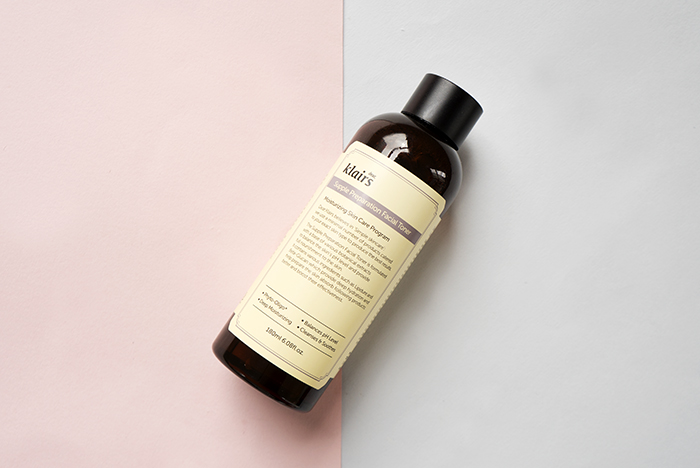
A huge misconception about toners comes from back in the day when people thought they were supposed to leave your skin feeling tight, dry, and “clean.” Thankfully, now we all know that hydration and a dewy plump complexion is the way to go when it comes to healthy skin.
Additionally, a toner can shrink the appearance of your pores and prep the surface of your face for the products you are about to use. Sometimes after cleansing, your face is bit tired, and a toner makes sure it gets a little pick-me-up before lathering it with six or so products. It’s like the pregame to the big party.
What is cleansing water?
Read: Cleansing water is NOT micellar water. It’s a common mistake, but you want to make sure you have your facts straight.
While they may still seem very similar, and even be used in similar places in your routine, they are ultimately different products with different ingredients. Micellar water can feel less like, well, water, thanks to the oily micelles that give it its name. The choice of which one to use just depends on your own personal preference and skin type—if you use heavy makeup, micellar water might be the best bet since it’s a makeup-removing pro.
Cleansing water is purified H20 that has different components infused into it, giving it cleansing properties without the need to lather product on your skin. Micellar water has oily micelles that helps it clean the surface of your skin and remove makeup. Cleansing water is usually infused with other things such as essential oils, plant extracts, collagen, and minerals.
For example, the Neogen Real Flower Rose Cleansing Water uses rose in addition to aloe and hibiscus to leave your skin hydrated, plumped, and refreshed. Some natural ingredients like rose can be an excellent toning ingredient, but alone it is not the same as a complete toner. Make sure that at the end of the day you are listening to the needs of your skin when deciding which way to go.
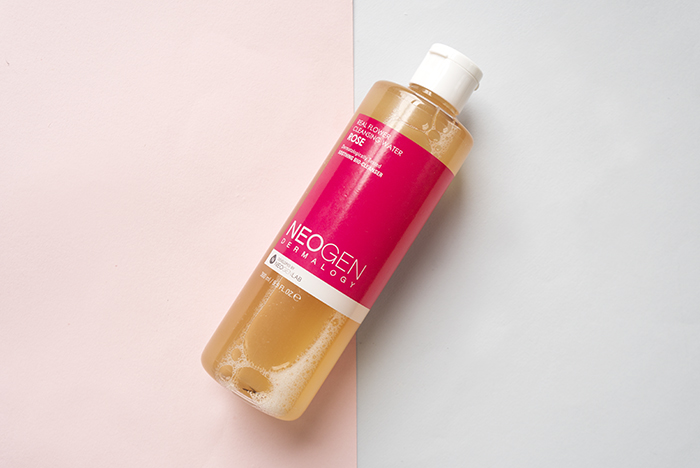
When to use toner:
Toner is meant to prepare the skin for more product and get rid of whatever is left on your skin that your normal cleansing routine couldn’t pick up. To maximize the effectiveness of your toner it’s a good idea to put it on no more than a minute after cleansing, with a cotton pad or by patting it on the face.
When to use cleansing water:
Cleansing water can be used as part of a double cleansing routine, or as a light refresh in the morning and throughout the day. I personally wouldn’t recommend using a cleansing water on its own for removing make up since it likely won’t be able to get everything off by itself. It’s actually most effective if you dap it on rather than wipe with a cotton pad.
Bottom line:
Toners and cleansing waters are NOT the same. I think people who claim they’re the same love to feel like they know some big secret, saying they’ve figured it out and outsmarted all the beauty companies. The truth is that they do exist as separate things and for very important reasons. So be smart, and cleanse (and tone!) responsibly.


